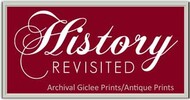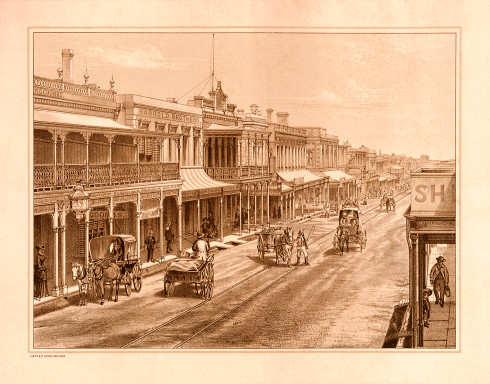 Loading... Please wait...
Loading... Please wait...All prices are in All prices are in AUD
Categories
- Home
- Giclee Prints
- Giclee, Henn, Architecture, Adelaide, retail, Hindley Street
- Home
- Giclee Prints
- South Australian Scenes
- Giclee, Henn, Architecture, Adelaide, retail, Hindley Street
- Home
- Giclee Prints
- South Australian Scenes
- Louis Henn & Co., SA, 1880s
- Giclee, Henn, Architecture, Adelaide, retail, Hindley Street
Product Description
Giclee, Henn, Hindley Street, Colonial Victorian Architecture, Adelaide, Retail
Archival quality Limited Edition Giclee inkjet on cotton paper after an original lithograph published by Louis Henn & Co, located 76 Currie Street, Adelaide, circa 1882-84.
Size of image = 32.5cm x 24.5cm (13 x 9 2/3 inch)
Issued with Limited Edition Certificate /200
Hindley Street in the 1880s
This scene illustrates East end of Hindley Street as a principal retail destination. Men wearing bowler hats, bustled ladies & children, stroll along the wide dirt street. Wagons, carriages and drays roll along bare earth roads, some carrying kegs, others metal urns. Hindley Street was the city's gateway for newly arrived immigrants. Many modest dwellings were built at the western end as much of the potable water was accessed from the Torrens River.
Among the many small and medium sized businesses represented- 25 drapers, tailors shoe/boot makers, women’s outfitters, jewelers & watchmakers, chemists, hairdressers, booksellers. Produce included butchers, fruiterers, greengrocers, and bakers.
Future retail icons started in Hindley St: J. Miller Anderson began in Hindley Street in 1859, developing into a leading South Australian emporium. They closed in 1988 after 148 years, the oldest department store in SA. The Chinese community were well represented towards Morphett Street, catering to the their cultural tastes, now popular as China Town.
On the left foregroud "W.G.. Coombs Saddlery"-William Green Coombs arrived from Somerset on 15 June 1852 of the emigrant ship "Standard” and is listed as "a farm servant". As evidenced here, by 1882 he had become established a saddlery he operated for 30 of his 37 years in the colony. *Please note the lady at the carriage reins in front of W.G. Coombes.
Next building is proudly identified as "Harrold Brothers". Both Joseph & Daniel Harrold arrived in 1848, opening a hardware & ironmonger business. They also established themselves as major importers of essential machinery, iron. coal and metal into the Colony. From 1869-1885 Harrold Bros. secured shares in the clipper ship "City of Adelaide", eventually adding her to their “Adelaide Line” of ships when they became Port Adelaide shipping agents. Enterprising businessmen, they sent salesmen to all corner of South Australia, as well as neighboring colonies. They also had a large Port Adelaide warehouse.
In the right foreground can be seen the balcony of Howell & Co Stationers, next door (unseen) was W. Bermingham Boot Factory, and next door to them Exchange Hotel.
Both Hindley and Rundle Streets were named after two Members of the British House of Commons who had joined the First Board of Directors of the South Australia Company. Charles Hindley and John Rundle are the namesakes of Adelaide's major retail center .












